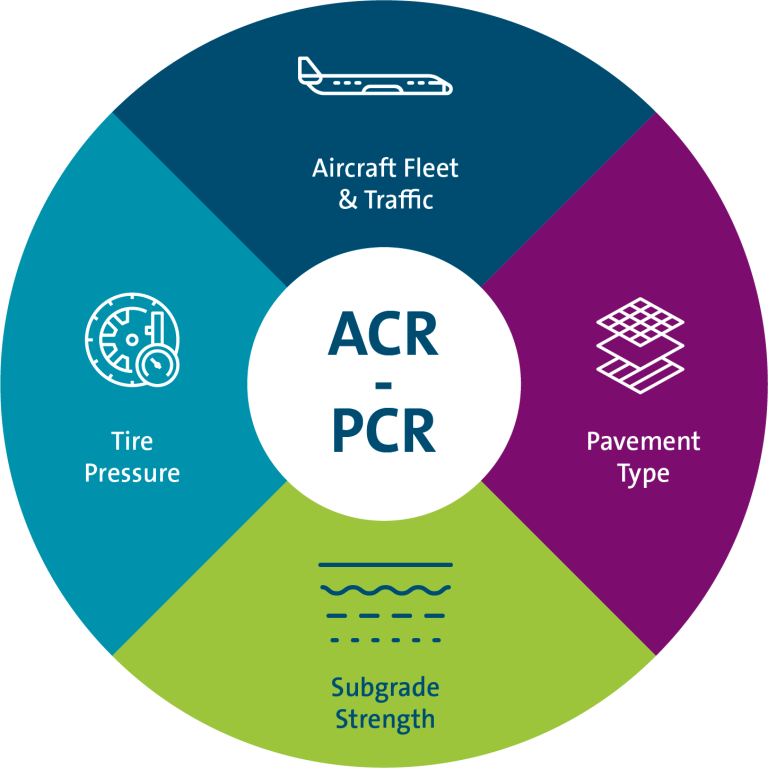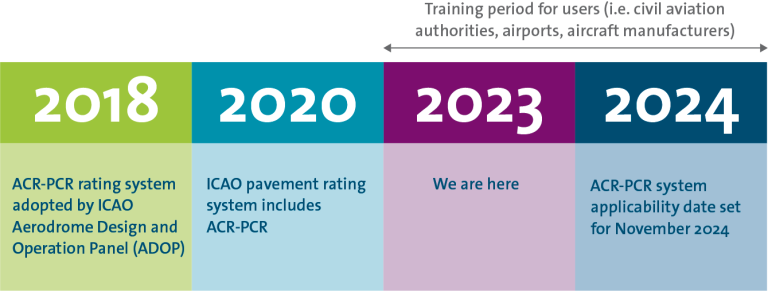ACR-PCR: What does it mean for Airports?

Improving predictability for airport owners and operators
The ACR-PCR system will replace the outdated ACN-PCN system, which is known to be inconsistent with modern airport pavement design methods. The ACR-PCR system provides a more accurate evaluation of the bearing strength of airport pavements.
This offers airport owners and operators improved predictability of pavement life and optimization of pavement usage; as well as the ability to better optimize and prioritize inspection and maintenance planning for their pavements.
Adopting the ACR-PCR system: a 3-stage approach
Automatic conversion between ACN-PCN and ACR-PCR is not possible as there is no recognized correlation between the two systems. The ACR-PCR method requires an assessment of the following elements:

Adopting the ACR-PCR system typically entails a 3-stage approach in defining the PCR for the airport pavements.
1. Assess traffic: assess the current (and future) aircraft fleet operations at the airport, including a detailed look at the types of aircraft, associated operating restrictions, and aircraft pavement usage.
2. Evaluate pavements: define pavement inspections required for evaluating the bearing strength of airport pavements and assess the airport pavements using the latest pavement design methods.
3. Conclude: establish the PCR for the respective airport pavements in accordance with the ACR-PCR system to include in the Aerodrome Information Publication (AIP) of the airport.
The timeline for the ACR-PCR system
The ACR-PCR system has been adopted by ICAO and will become applicable in November 2024. As of that moment, airports need to publish the Pavement Classification Ratings (PCR) for all airport pavements in the AIP.
Is your airport ACR-PCR ready?
Adopting the new ACR-PCR system offers plenty of opportunities for airport owners and operators to optimize the use, inspection and maintenance of their pavements. But converting to the new method requires a comprehensive understanding of the ACR-PCR requirements.
Working with experts who have the knowledge and experience to guide you through the process can help you ensure a successful and timely adoption. NACO has over 70 years of experience in airport pavement engineering and expertise in ACR-PCR projects and can help airports in the process.
This article was first published on ACI World Insights, 1st June 2023.
To find out more about how NACO makes compliance for your airport easier, please read about our RCR-Tool©.
